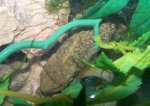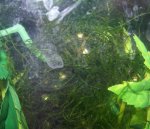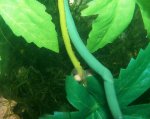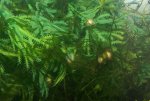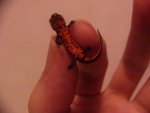- Joined
- Dec 13, 2006
- Messages
- 6,624
- Reaction score
- 120
- Points
- 63
- Location
- Wappingers Falls, NY
- Country
- United States
Today is feeding day, and guess who I caught laying eggs? This is a new species for me; I've never raised them before. I bought them 1 1/2 or 2 years ago (don't remember exactly) at the petstore when they arrived; I hadn't seen this species offered for sale for a while, and was thrilled that they turned out to be male and female. And now I'm even more thrilled! Their names are "Beauty" and "the Beast," here is Beauty with her burgeoning brood:
I will be following their progress in this thread.
Just for the sake of completeness, here is another recent mention of this magnificent pair:
http://www.caudata.org/forum/f1-gen...t-curiosity-question-handling.html#post205899
I will be following their progress in this thread.
Just for the sake of completeness, here is another recent mention of this magnificent pair:
http://www.caudata.org/forum/f1-gen...t-curiosity-question-handling.html#post205899
Attachments
Last edited:

